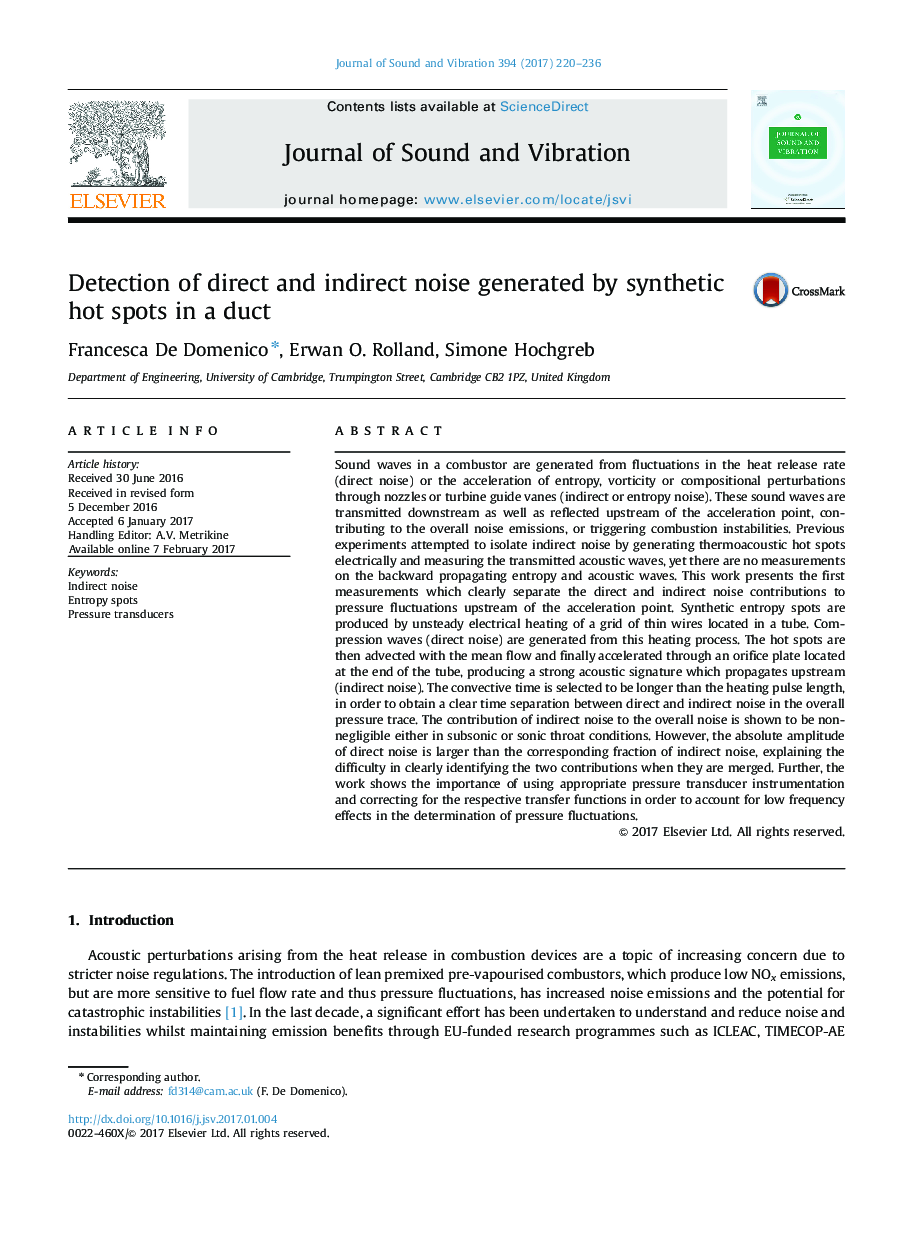| Article ID | Journal | Published Year | Pages | File Type |
|---|---|---|---|---|
| 4924308 | Journal of Sound and Vibration | 2017 | 17 Pages |
Abstract
Sound waves in a combustor are generated from fluctuations in the heat release rate (direct noise) or the acceleration of entropy, vorticity or compositional perturbations through nozzles or turbine guide vanes (indirect or entropy noise). These sound waves are transmitted downstream as well as reflected upstream of the acceleration point, contributing to the overall noise emissions, or triggering combustion instabilities. Previous experiments attempted to isolate indirect noise by generating thermoacoustic hot spots electrically and measuring the transmitted acoustic waves, yet there are no measurements on the backward propagating entropy and acoustic waves. This work presents the first measurements which clearly separate the direct and indirect noise contributions to pressure fluctuations upstream of the acceleration point. Synthetic entropy spots are produced by unsteady electrical heating of a grid of thin wires located in a tube. Compression waves (direct noise) are generated from this heating process. The hot spots are then advected with the mean flow and finally accelerated through an orifice plate located at the end of the tube, producing a strong acoustic signature which propagates upstream (indirect noise). The convective time is selected to be longer than the heating pulse length, in order to obtain a clear time separation between direct and indirect noise in the overall pressure trace. The contribution of indirect noise to the overall noise is shown to be non-negligible either in subsonic or sonic throat conditions. However, the absolute amplitude of direct noise is larger than the corresponding fraction of indirect noise, explaining the difficulty in clearly identifying the two contributions when they are merged. Further, the work shows the importance of using appropriate pressure transducer instrumentation and correcting for the respective transfer functions in order to account for low frequency effects in the determination of pressure fluctuations.
Keywords
Related Topics
Physical Sciences and Engineering
Engineering
Civil and Structural Engineering
Authors
Francesca De Domenico, Erwan O. Rolland, Simone Hochgreb,
